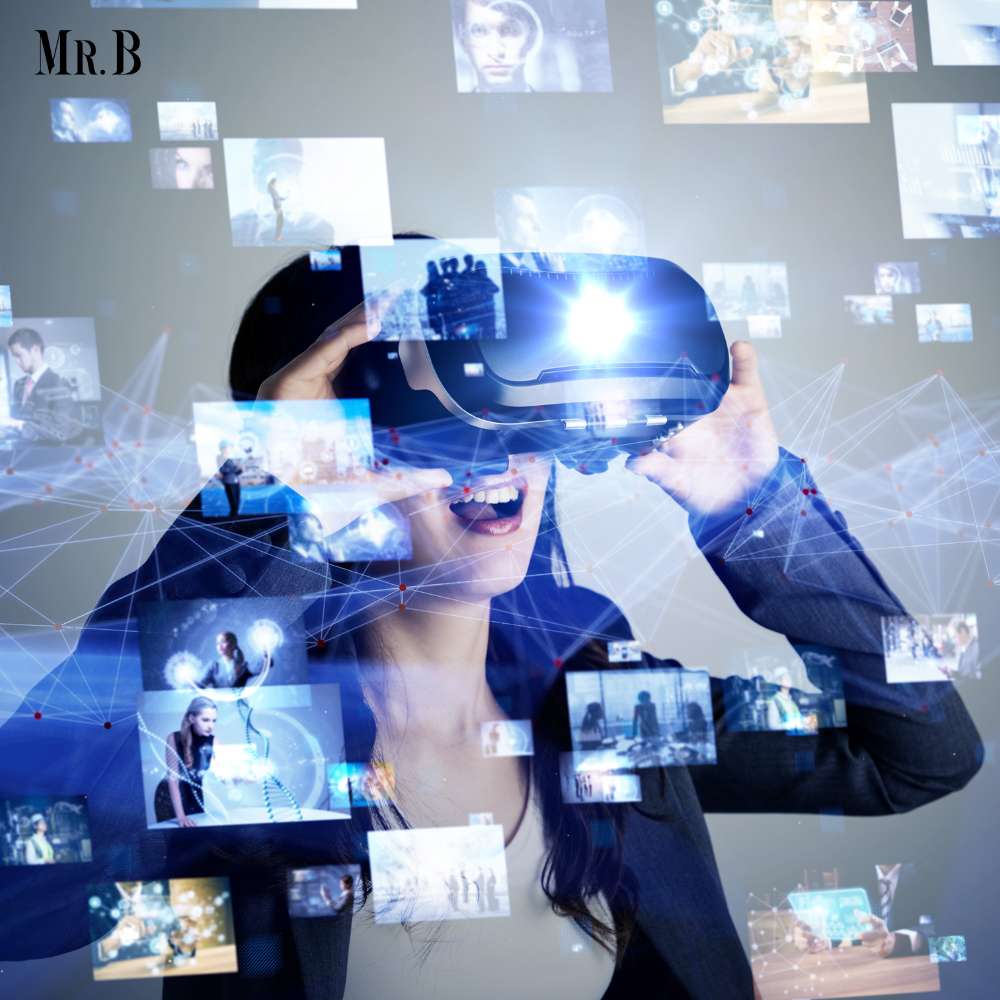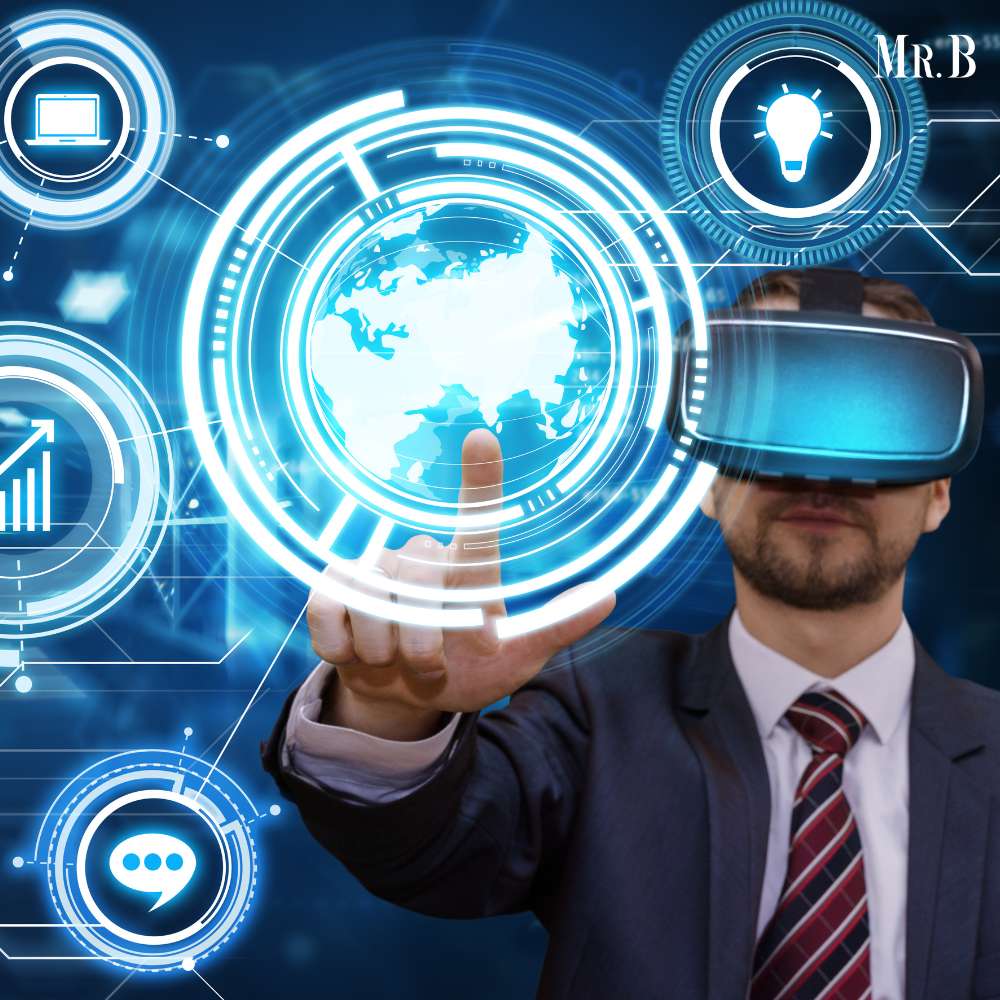As virtual reality business is taking charge gradually, revenues of businesses seem to surge like never before. Humans are visual creatures. They need tangibility and interaction with objects to get a better understanding of them. A simulated digital environment is experienced by prospective consumers in order to witness the product or service. The marketing and advertising industry is especially embracing these technologies to spread higher awareness about their product.
Since the arrival of consumer-friendly and affordable headsets, the art of pitching the product to a consumer has took a massive turn. Consumers are literally able to “see” the proposed product or service via the use of the headset. It has become easy for businesses to show their vision to customers via the use of these headsets. As customers gain a visual experience, nothing better than that, isn’t it?
Many business tycoons have placed their trust on virtual reality technology. Many diverse sectors will gain immense benefits from such a technology.
Let’s read more on Which Businesses Will Benefit from Virtual Reality?
1. Real Estate:
Virtual Reality in real estate is revolutionizing property tours and allowing potential buyers to explore homes from the comfort of their own living rooms. By offering immersive 3D walkthroughs, real estate agents and developers can provide a realistic experience, which greatly aids in the decision-making process.
2. Healthcare:

The healthcare sector is embracing virtual reality for everything from training medical professionals to helping patients manage pain or anxiety. Surgeons can practice complex procedures, and patients can undergo VR therapy for various conditions.
3. Education:
Educational institutions are adopting this visual technology to enhance learning experiences. With VR, students can explore historical sites, conduct immersive science experiments, and even visit outer space, making education more engaging and interactive.
4. Travel and Tourism:
VR allows travelers to experience destinations before they book their trips. Virtual tours, combined with 360-degree videos and images, help travelers gain a better understanding of their chosen vacation spot, ultimately influencing their decision to book.
5. Automotive Industry:
In the automotive sector, VR is used for design, engineering, and virtual showrooms. Potential car buyers can take virtual test drives and explore different car models without visiting a physical dealership.
6. Retail:
VR is revolutionizing the way consumers shop. Virtual shopping experiences, where customers can try on clothes, see how furniture fits in their homes, or even sample products before purchase, are becoming increasingly popular.
7. Architecture and Design:
Architects and interior designers are using VR to showcase designs in a more immersive way. Clients can walk through buildings that are still in the planning phase, allowing for design adjustments before construction begins.
8. Entertainment:
In the entertainment industry, VR offers unique experiences in the form of virtual concerts, immersive gaming, and interactive storytelling. The appeal of these experiences attracts new audiences and boosts revenue.
9. Advertising and Marketing:
Virtual reality advertisements are gaining popularity as they captivate consumers in a more compelling way. Brands can immerse potential customers in their products or services, leaving a lasting impression.
10. Manufacturing:
VR plays a crucial role in the manufacturing industry by enhancing product development and safety training. It enables engineers to visualize and test prototypes in a virtual environment before physical production begins.
Five Benefits of Virtual Reality for Businesses:
1. Enhanced Customer Engagement:
VR immerses customers in a world of possibilities, fostering emotional connections with products or services. This heightened engagement translates to increased brand loyalty and conversions.
2. Cost Savings:
Virtual reality can significantly reduce costs associated with travel, training, and prototyping. Businesses can conduct virtual meetings, train employees remotely, and test product prototypes without the need for physical models.
3. Competitive Advantage:
Businesses that embrace virtual reality gain a competitive edge. They can differentiate themselves from competitors by offering innovative, immersive experiences that stand out in the market.
4. Improved Training and Education:
VR provides a safe, controlled environment for training and education. From medical simulations to on-the-job training, employees and students can learn more effectively, which ultimately leads to better performance.
5. Data Analytics:
VR technology captures valuable data on user behavior and preferences. This data can be used to refine products, marketing strategies, and customer experiences, allowing businesses to make data-driven decisions.
The Importance of Visuals in Customer Buying Decisions:

Visuals have always played a pivotal role in the buying decision-making process. They are often the first point of contact between a customer and a product or service. In the digital age, where the attention span of consumers is decreasing, visuals become even more critical. Visual content is processed faster by the human brain and has a lasting impact. Virtual reality takes this to the next level by providing an immersive, sensory experience.
When customers are presented with high-quality visual content, they can better understand the product or service, imagine themselves using it, and anticipate the benefits it offers. VR enhances this process by allowing customers to explore and interact with products in a virtual space, bridging the gap between imagination and reality.
Moreover, the emotional connection created through VR visuals influences buying decisions. Customers feel more connected to a brand or product when they have personally engaged with it in a virtual environment. This emotional attachment often leads to a purchase and fosters brand loyalty.
Changing Buying Patterns in the Age of Virtual Reality:
The invasion of virtual reality is set to reshape buying patterns in profound ways. As VR technology becomes more accessible and integrated into daily life, customers will increasingly rely on virtual experiences to inform their purchasing decisions.
1. Virtual Try-Before-You-Buy:
Consumers can “try on” clothes, virtually sit in a new car, or see how a piece of furniture fits in their home. This minimizes the risk of dissatisfaction with the product, leading to more confident buying decisions.
2. Reduced Reliance on Physical Stores:
As virtual shopping experiences become more realistic and convenient, the need for physical stores may decrease. Customers can explore and purchase products from the comfort of their homes.
3. Global Shopping:
It transcends geographical boundaries, allowing customers to shop from retailers worldwide. This global accessibility opens up a vast array of options, enabling customers to find precisely what they desire.
4. Personalized Shopping:
VR can track and analyze user behavior and preferences. This data can be used to provide personalized recommendations, enhancing the overall shopping experience.
5. Increased Immersion:
Immersive VR experiences will lead to more impulse buying. Customers who feel emotionally connected to a product are more likely to make impulsive purchases.

Virtual Reality: A Green Light for All Business Sizes
One of the most significant advantages of VR is its scalability. It’s not limited to large corporations; businesses of all sizes can harness its power. With VR technology becoming more affordable and accessible, small and medium-sized enterprises (SMEs) are seizing the opportunity to level the playing field.
SMEs can utilize VR to create engaging marketing campaigns, offer unique customer experiences, and streamline their operations. Whether it’s a local boutique or a tech startup, virtual reality can be tailored to meet the specific needs and budget of any business. This democratization of VR levels the competition and ensures that innovative businesses, regardless of size, can thrive.
Conclusion:
Virtual reality is transforming the business landscape across diverse sectors, revolutionizing the way businesses interact with their customers. Its immersive capabilities are enhancing customer engagement, reducing costs, and offering a competitive advantage. Visuals play a critical role in influencing buying decisions, and VR takes this to the next level by providing an immersive and emotionally charged experience. As VR continues to shape consumer behavior, businesses of all sizes have a green light to explore and integrate this groundbreaking technology into their strategies and operations. The future is virtual, and it’s bright for those who embrace it.







